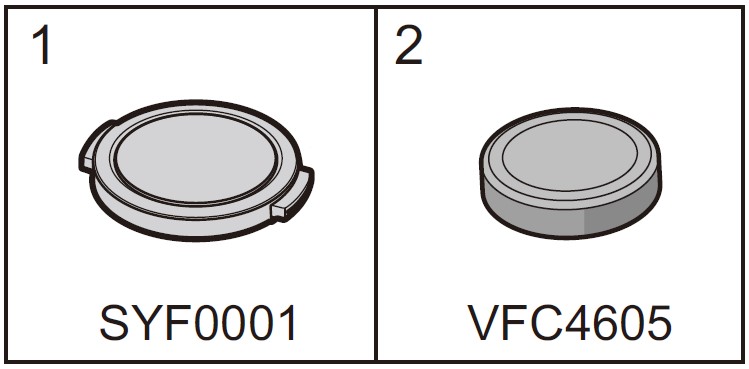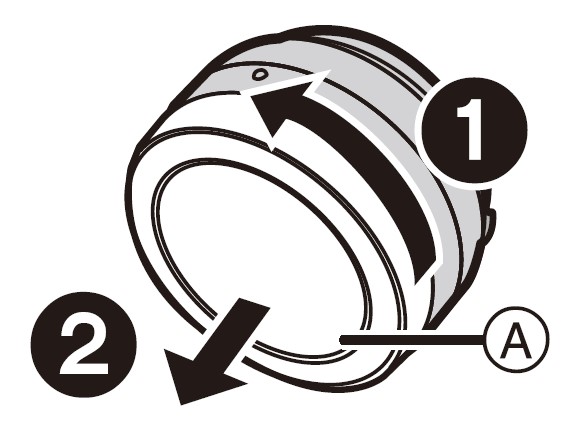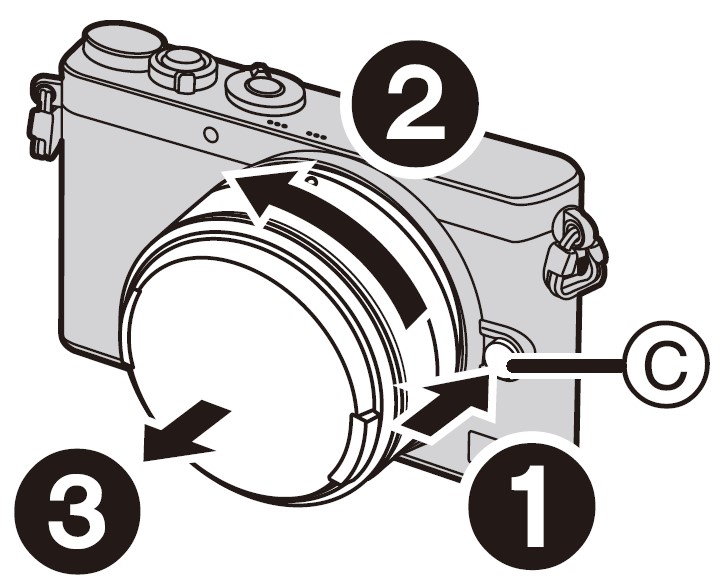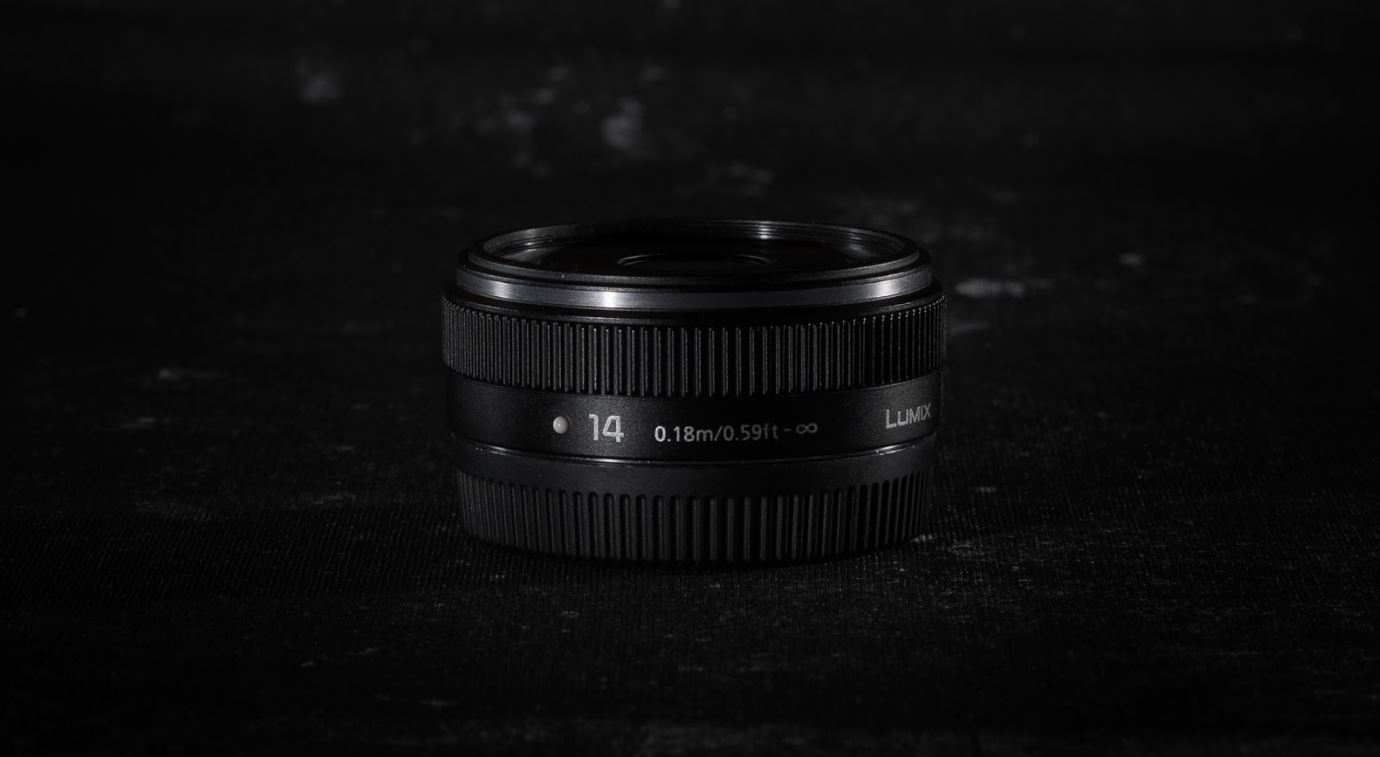
Panasonic LUMIX 14mm ASPH G Lens
ABOUT Panasonic
Panasonic Corporation is a multinational electronics company headquartered in Osaka, Japan. It was founded in 1918 by Konosuke Matsushita and originally started as a vendor of duplex lamp sockets. Over the years, Panasonic has grown into one of the largest electronics manufacturers in the world, offering a wide range of products and services.
Panasonic‘s business operations span various sectors, including consumer electronics, home appliances, automotive, industrial solutions, and B2B solutions. The company is known for its innovation and has a strong focus on research and development.
Precautions
Lens Care
- Sand and dust can damage the lens. Make sure that no sand or dust gets inside the lens or the terminals when using the lens on a beach, etc.
- The lens is neither waterproof nor splash-proof. If drops of water get onto the lens, wipe the lens with a dry cloth.
- Do not press the lens with excessive force.
- When there is dirt (water, oil, fingerprints, etc.) on the surface of the lens, the picture may be affected. Lightly wipe the surface of the lens with a soft, dry cloth before and after taking pictures.
- Do not place the lens mount facing downwards. Do not allow the lens contact point 1 to become dirty.

About Condensation (Fogging of the Lens)
- Condensation occurs when there are differences in temperature and humidity as described below. Condensation can cause the lens to become dirty and lead to mold and malfunctioning, so exercise caution in the following situations:
- When the camera is brought indoors from outside during cold weather
- When the camera is brought into an air-conditioned car
- When cold air from an air conditioner is directly blown onto the lens
- In humid places
- Put the camera into a plastic bag to allow it to acclimatize to the surrounding temperature to prevent condensation. If condensation occurs, turn the power off and leave it for about two hours. Once the camera acclimatizes to the surrounding temperature the condensation will go away naturally.
Supplied Accessories
[Inspection to be performed when you unpack the unit]
When removing the unit from its packing box, check that the main unit and the supplied accessories are there and also check their external appearance and functions to verify that they have not sustained any damage during distribution and transportation. If you discover any trouble, contact your vendor before using the product.
Product numbers are correct as of August 2014. These may be subject to change.

- Lens Cap
- Lens Rear Cap
(The lens rear cap and lens cap are attached to the interchangeable lens at the time of purchase.)
Names and Functions of Components

- Lens surface
- Focus ring
Rotate to focus when taking pictures with manual focus. - Contact points
- Lens fitting mark
Attaching/Detaching the Lens
- Refer also to the camera’s owner’s manual for attaching and detaching the lens.
Attaching the Lens
- Check that the camera is turned off.
- Turn the lens rear cap to detach it.
A: Lens Rear Cap
- Align the lens fitting marks B on the camera body and the lens and then rotate the lens in the direction of the arrow until it clicks.
• Do not press the lens release button C when you attach a lens.
• Do not try to attach the lens when holding it at an angle to the camera body as the lens mount may get scratched
• Check that the lens is attached correctly.
• Be sure to remove the lens cap when recording.

Detaching the Lens
- Check that the camera is turned off.
- Press the lens release button C while turning the lens as far as possible in the direction of the arrow to detach it.
• Attach the lens rear cap so that the lens contact point does not get scratched.
• Attach the body cap to the camera so no dirt or dust will get inside the main unit.

Attaching Filters
- Vignetting may occur if using 2 or more MC protectors (optional: DMW-LMC46), PL filters (optional: DMW-LPL46) or ND filters (optional: DMW-LND46), or if using thick protectors and/or filters.
- The filter may become impossible to remove if excessively tightened, so please refrain from tightening it too strongly.
- It is possible to attach the lens cap with the filter already attached.
Conversion lens
- We recommend that you use a conversion lens that is compatible with this unit.
• Wide conversion lens (optional: DMW-GWC1)
• Macro conversion lens (optional: DMW-GMC1)
• Fish eye conversion lens (optional: DMW-GFC1) - Use of a non-compatible conversion lens or adaptor may result in breakage or damage to the lens.
- For details, refer to the operating instructions of the relevant conversion lenses.
Cautions for Use
Take care not to drop or knock the lens. Also, take care not to put a lot of pressure on the lens.
- Take care not to drop the bag that you inserted the lens in as it may strongly shock the lens. The camera may stop operating normally and pictures may no longer be recorded. Also, the lens may be damaged.
When using pesticides and other volatile substances around the camera make sure that they do not get onto the lens.
- If such substances get onto the lens they can damage the exterior case or cause the paint to peel.
Do not point the lens at the sun or other strong light sources.
- This could cause the lens to collect an excessive amount of light, resulting in fire and malfunction.
Do not carry the unit when it is still attached to the camera body.
- Under no circumstances should the unit be stored in any of the following locations since doing so may cause problems in operation or malfunction.
- In direct sunlight or on a beach in summer
- In locations with high temperatures and humidity levels or where the changes in temperature and humidity are acute
- In locations with high concentrations of sand, dust, or dirt
- Where there is fire
- Near heaters, air conditioners, or humidifiers
- Where water may make the unit wet
- Where there is vibration
- Inside a vehicle
- Refer also to the owner’s manual of the digital camera.
- When the unit is not going to be used for a prolonged period, we recommend storing it with a desiccant (silica gel). Failure to do so may result in performance failure caused by mold, etc. It is recommended that you check the unit’s operation before use.
- Do not leave the lens in contact with rubber or plastic products for extended periods.
- Do not touch the lens contact point. Doing so can cause failure of the unit.
- Do not disassemble or alter the unit.
Do not use benzine, thinner, alcohol, or other similar cleaning agents to clean the lens glass or exterior cabinet.
- Using solvents can damage the lens or cause the paint to peel.
- Wipe off any dust or fingerprints with a soft, dry cloth.
- Use a dry dust cloth to remove dirt and dust on the focus ring.
- Do not use a household detergent or a chemically treated cloth.
Troubleshooting
A sound is heard when the camera is turned on or off.
- This is the sound of lens or aperture movement and is not a malfunction.
Specifications
Specifications are subject to change without notice.
INTERCHANGEABLE LENS FOR DIGITAL CAMERA “LUMIX G 14 mm/F2.5 ASPH.”

Limited Warranty
Limited Warranty Coverage (For USA Only)
If your product does not work properly because of a defect in materials or workmanship, Panasonic Corporation of North America (referred to as “the warrantor”) will, for the length of the period indicated on the chart below, which starts with the date of original purchase (“warranty period”), at its option either (a) repair your product with new or refurbished parts, (b) replace it with a new or a refurbished equivalent value product, or (c) refund your purchase price. The decision to repair, replace or refund will be made by the warrantor.

During the “Labor” warranty period there will be no charge for labor. During the “Parts” warranty period, there will be no charge for parts. This Limited Warranty excludes both parts and labor for non-rechargeable batteries, antennas, and
cosmetic parts (cabinet). This warranty only applies to products purchased and serviced in the United States. This warranty is extended only to the original purchaser of a new product that was not sold “as is”.
Mail-In Service–Online Repair Request
Online Repair Request
To submit a new repair request and for quick repair status visit our Web Site at www.panasonic.com/repair.
When shipping the unit, carefully pack, include all supplied accessories listed in the Owner’s Manual, and send it prepaid, adequately insured, and packed well in a carton box. When shipping Lithium Ion batteries please visit our Web Site at www.panasonic.com/BatteryHandling as Panasonic is committed to providing the most up-to-date information. Include a letter detailing the complaint, a return address and provide a daytime phone number where you can be reached. A valid registered receipt is required under the Limited Warranty.
Customer Services Directory (United States)
Obtain Product Information and Operating Assistance; locate your nearest Dealer or Service Center; purchase
Parts and Accessories; or make Customer Service and Literature requests by visiting our Web Site at:
http://www.panasonic.com/support
or, contact us via the web at:
http://www.panasonic.com/contactinfo
For hearing or speech-impaired TTY users, TTY: 1-877-833-8855
FAQS About Panasonic LUMIX 14mm ASPH G Lens
What advantage does a 14mm lens provide?
The 14mm focal length offers an intriguing viewpoint because it is far wider than what the human eye can see.
What is the 14mm equivalent of the Lumix?
28mm
What is the angle of a 14mm lens?
the 115.7 degree
What is a 14mm lens’ field of view?
When using a full-frame (35mm) DSLR camera body, the field of view is 115 degrees, and when using an APS-C crop sensor DSLR, it is roughly 94 degrees.
Who produces the lenses used by Lumix cameras?
Panasonic is the manufacturer of them.
Are Panasonic’s lenses of high quality?
They frequently offer a fantastic blend between construction quality, autofocus quickness, and optical performance.
What is the Lumix 14’s minimum focus distance?
0.30 m
What is the weight of the Lumix 14mm?
1.9 oz
Are 14mm contacts a decent size?
The typical diameter of a contact lens is 14mm.
Is a 14mm lens suitable for taking real estate photos?
When standing against a wall in a very small interior space, you’ll typically only need to go wider (16mm, 14mm, or 11mm!) to “fit in” as much of the available space.
For more manuals by Panasonic, Visit Manualsdock
[embeddoc url=”https://manualsdock.com/wp-content/uploads/2023/09/Panasonic-LUMIX-14mm-ASPH-G-Lens-Owner-Manual.pdf” download=”all”]


